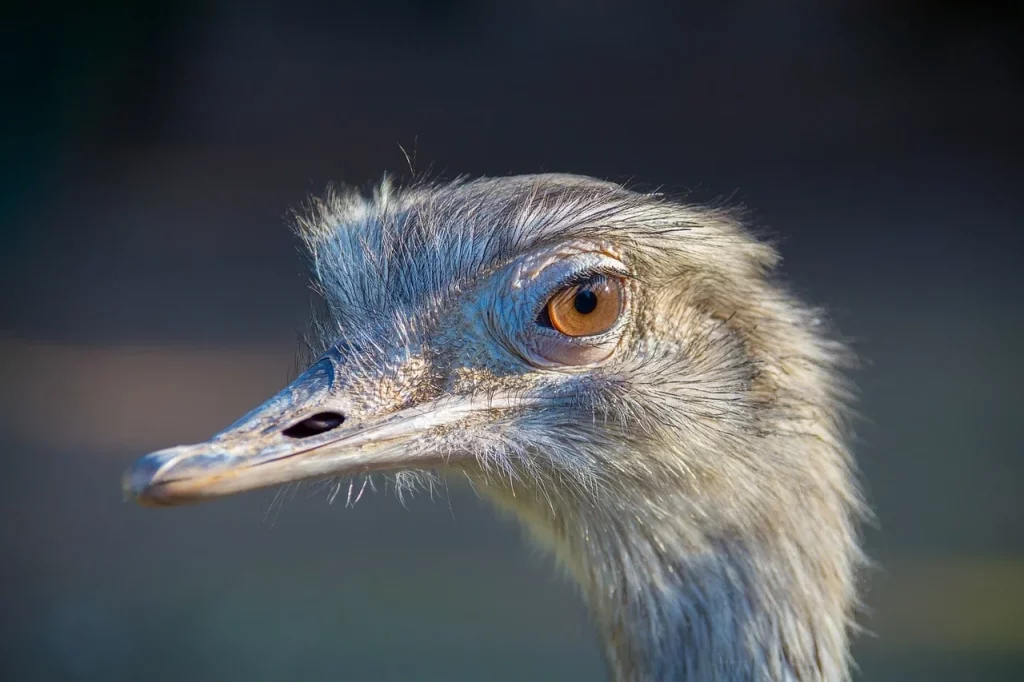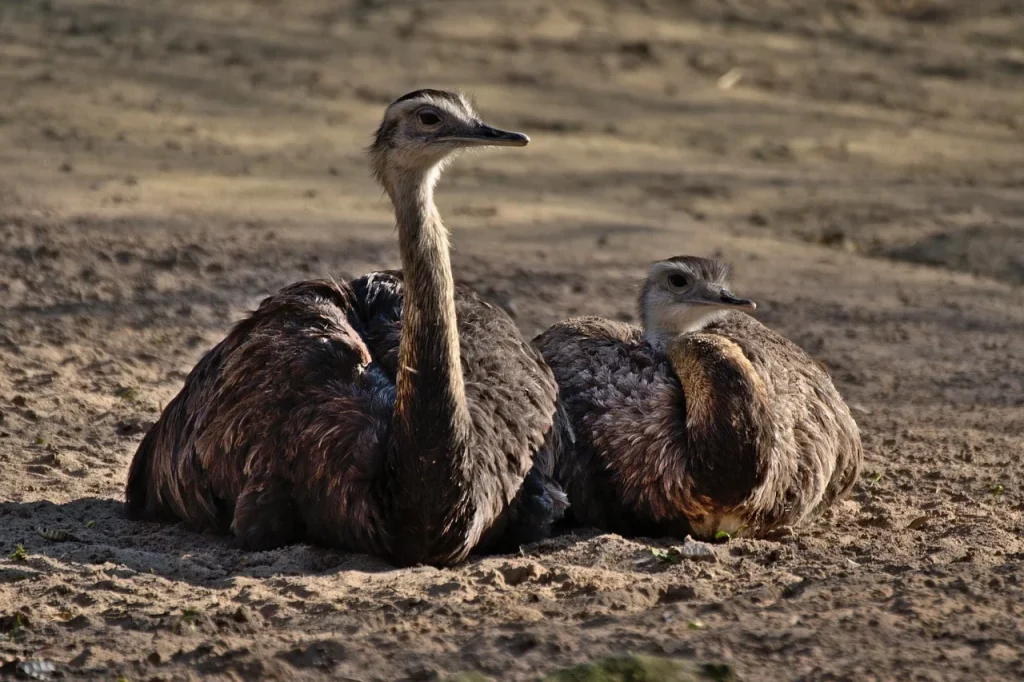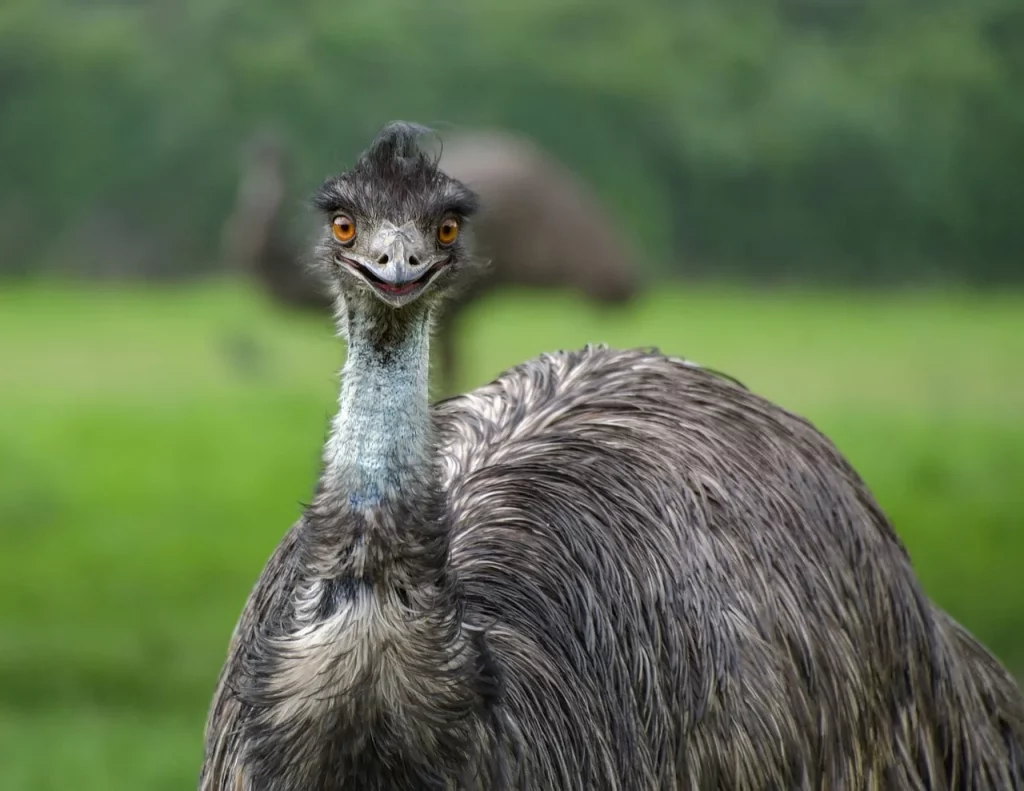In the world of birds, emus are the equivalent of that one uncle who always has the best stories at family gatherings. They’re fascinating, a little odd, and you can’t help but listen when they ‘speak.’ With their long legs, even longer necks, and a penchant for swallowing odd things, emus are nature’s comedians.
But their antics are just the tip of the iceberg. These creatures are survivors, adaptors, and perhaps the best road runners since the cartoon. As we uncover some epic facts about them, you’ll learn just how amazing these birds are. Who knew emus could be so interesting?
Emus are Australia’s majestic, flightless wonders, embodying the wild spirit of the continent.
Steve Irwin
Emu Facts
From sprinting like Usain Bolt to rocking technicolor chicks, get ready to have your mind blown. Read carefully, because I created a quiz for you at the end of this article to test your knowledge. Can you ace it?
- These birds are the second largest by height, standing tall just after their African cousin.
- In an incredible display of endurance, they can sprint at speeds up to 30 mph.
- Unlike most birds, their legs are equipped with large, powerful muscles, enabling them to cover great distances without tiring.
- They possess a unique pouch in their throat, which is used to amplify their calls across the vast Australian landscapes.
- Their diet is omnivorous, including insects, plants, and even small animals.
- Remarkably, they consume stones and pebbles to aid in grinding up food inside their gizzard.
- A peculiar behavior observed is their dance, especially during mating season, which involves jumping and flapping to attract a mate.
- They can survive for weeks without food and water, utilizing fat reserves and metabolic water production.
- Interestingly, it’s the males that incubate the eggs and rear the chicks.
- Their eggs are dark green in color, a rarity among birds.
- With a powerful kick, they can defend themselves against predators, including humans.
- These creatures are excellent swimmers, taking to water to cool down or escape threats.
- Their eyesight is keen, allowing them to spot threats from a considerable distance.

- They have three eyelids: one for blinking, one for sleeping, and a third to keep dust away.
- Their feathers are double-quilled, giving them a shaggy appearance.
- They do not possess the ability to fly, having evolved with heavy, flightless bodies.
- A group of these birds can be called a mob, reflecting their often social nature.
- They are capable of laying up to 20 eggs in a single season, each weighing about 1 pound.
- Their lifespan in the wild is approximately 10 to 20 years, showcasing their resilience.
- They play a critical role in the ecosystem by dispersing seeds and controlling insects.
- During the early 20th century, they were involved in the “Great Emu War” in Australia, where they surprisingly came out victorious against humans.
- Their feathers have been traditionally used by Indigenous Australians for ceremonial purposes.
- They have a highly efficient respiratory system to cope with arid environments.
- Unlike most birds, they have soft, fluffy feathers that act as excellent insulation.
- They are solitary wanderers but can form large groups when food is abundant.
- Their adaptability has allowed them to thrive in various environments, from deserts to snow-covered regions.
- They have no teeth, relying instead on their gizzard to break down food.
- Interestingly, they can regulate their body temperature by changing the blood flow to their legs.

- Their toe pads are thick, providing cushioning and support for their long treks.
- They communicate through a range of sounds, from grunts to drumming.
- Their neck and legs make up most of their height, giving them a distinctive silhouette.
- Despite their size, they are exceptionally agile, capable of dodging obstacles while running at high speeds.
- Their social structure is flexible, changing with the seasons and food availability.
- They are indigenous to Australia, symbolizing the country’s unique wildlife.
- They play a vital role in the cultural stories and mythology of Indigenous Australians.
- Their population numbers have remained stable, thanks to conservation efforts and their adaptability.
- They have distinctive blue skin on their face and neck, which is more pronounced in males.
- Interestingly, they can travel long distances to find water, demonstrating remarkable homing instincts.

- Their clawed feet are a formidable weapon, capable of tearing through metal wire fences.
- They have a curious nature, often approaching humans and other animals with interest.
- During extreme heat, they will take dust baths to keep cool and rid themselves of parasites.
- They can jump up to 7 feet in the air from a standing position.
- Their beak is specially adapted to tear at tough vegetation, allowing them to eat a wide variety of plants.
- Despite their flightlessness, they are excellent climbers, able to navigate through rugged terrain.
- They exhibit remarkable memory, recognizing and remembering threats and food sources.
- Their oil is used in cosmetics and pharmaceuticals and is valued for its moisturizing properties.
- In Aboriginal languages, their name often reflects their vocalizations, highlighting the importance of their call in their identification.
- They can withstand extreme temperature fluctuations, from scorching desert days to cold nights.
- Their evolutionary history dates back millions of years, showing their adaptability and resilience.
- Despite their large size, they are capable of swimming across wide rivers and lakes when searching for food or escaping predators.
Emu Myths

Emu facts are cool, but myths are wilder! Get ready to separate truth from feathers as we explore hilarious emu tales.
- Emus Can’t Walk Backwards
Contrary to popular belief, they can indeed move backwards, although they rarely do so. Due to their anatomical structure, moving forward is much more efficient and natural for these birds. - Emus Are Silent Creatures
This isn’t true; emus are quite vocal. They produce a range of sounds, including grunting and drumming noises, which are especially prominent during mating season. These sounds are used for communication within the species. - Emus Have No Predators
While adult emus are large and have few predators, they are not completely free from threats. Young ones are vulnerable to predators such as dingoes, eagles, and hawks. Adult emus can also fall prey to human activities. - Emus Are Solitary Birds
Although they can often be seen alone, they are known to form large flocks, especially when food is abundant or during the breeding season. These flocks can sometimes comprise hundreds of individuals, demonstrating their social nature. - Emus Can’t Swim
This is a misconception. They are actually quite capable swimmers. When they encounter water during their travels, they can use their powerful legs to propel themselves, demonstrating their adaptability to various environments.
No products found.
Emu FAQ

Before we step into the quiz, let’s read the answers to some common questions. Read carefully to prove your mastery of the topic.
- Are emus dangerous?
While they are generally not aggressive towards humans, they can become defensive if they feel threatened or cornered. It’s wise to keep a respectful distance and not provoke them. Their strong legs can deliver powerful kicks if they decide you’re a threat. - Can emus fly?
Nope, they are among the largest birds on the planet, and, like their cousin, the ostrich, they can’t fly. What they lack in airtime, they make up for with speed on the ground, running as fast as 30 miles per hour! - Where does an emu live?
They are native to Australia and are found across most of the continent, from coastal regions to the arid interior. They’re adaptable birds that thrive in various habitats, including forests, savannas, and grasslands. - Are emu eggs good to eat?
Absolutely! Emu eggs are not only edible but quite nutritious, offering a good source of protein and other nutrients. They’re significantly larger than chicken eggs, with a single emu egg equivalent to about ten chicken eggs. The taste is similar to chicken eggs but slightly richer. - What does an emu eat?
They are not picky eaters. They’re omnivores, feasting on a diet that includes plants, fruits, insects, and small animals. Their varied diet helps them adapt to different environments quite effectively. They’re especially fond of seeds, which can play a key role in dispersing plant species.
Emu Trivia

Welcome to the Ultimate Emu Quiz! Fair warning: score zero, and you might find an emu nesting in your bed tonight. Ready to rumble?
Conclusion
Learning about emus has taught us a lot. They show us how to get through hard times, move gracefully, and try new things. Emus, with their big eyes and tall bodies, remind us of the wild stories of Australia. They make us want to explore more and be free.
As always, let’s close this journey with a funny question: If emus could do human stuff for a day, what funny things do you think they’d do? Let me know in the comments.


